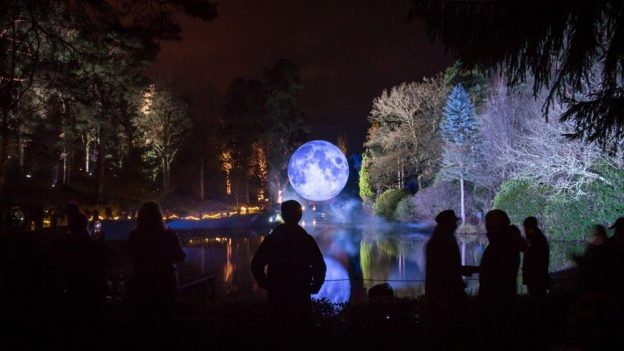Dorothy Max Prior chronicles the year that turned out to be – well, different to expected. Part three takes us from September to December 2020
It feels like things are on the up, with theatres and galleries opening up, artists once again meeting in real space to work together – but the news is getting gloomy again. As we reach the autumn equinox, cases rise. There are warnings of a second wave of Covid-19 infections. The blame game starts. Is re-opening schools the cause? Eat Out to Help Out? Gyms? Hairdressers? Partying freshmen? Who knows. By mid-October, a new three-tier alert system is in place. Tiers. Another word that has taken on new meaning. We collectively emit a loud sigh.
But there is diversion! A riot of interesting new online productions emerge in the autumn months, ACE emergency funding providing the wherewithal for artists to make new online shows or rework old ones; or the results of commissions from initiatives such as the Culture in Quarantine fund or venues such as Farnham Maltings, HOME Manchester, and the Centre for Live Art Yorkshire. I put aside my world weariness and dig in…
Some are re-workings of shows previously presented. Dante or Die’s User Not Found is an interesting example, as the show is about our relationship to online apps. It’s also about relationships, full stop. When I saw the show live, set in a specially adapted café, I loved the interplay between the live performer – Terry O’Donovan, musing out loud on the dilemma handed him when an ex-lover makes him his digital executor (yes, such things do exist) – and our interaction with the primed smartphones we were given. The phones are loaded with a specially created programme so we can see Terry’s phone interface. On one level, the show looks like something that could potentially be moved wholly online – but how well would they manage it without the atmosphere of the café, and Terry’s live presence? The answer is: brilliantly. The reworked show is placed on YouTube. We are asked to tune in on our phones, not on a computer, and to use earphones. We therefore, regardless of where we are, become completely embroiled and enmeshed in Terry’s world. We see his phone interface on our phone; we hear his voice in our ear. It starts with a flurry of ‘Are you OK?’ messages, as Terry learns of the death of his friend, moving into a loving re-evaluation of the former relationship and the person’s life, as viewed through their online activity. The level of detail is superb, with even a (fictional) hit pop video created from scratch. The post-show talk between performer/company co-director Terry O’Donovan and journalist Lyn Gardner is a well-managed and interesting extra element.
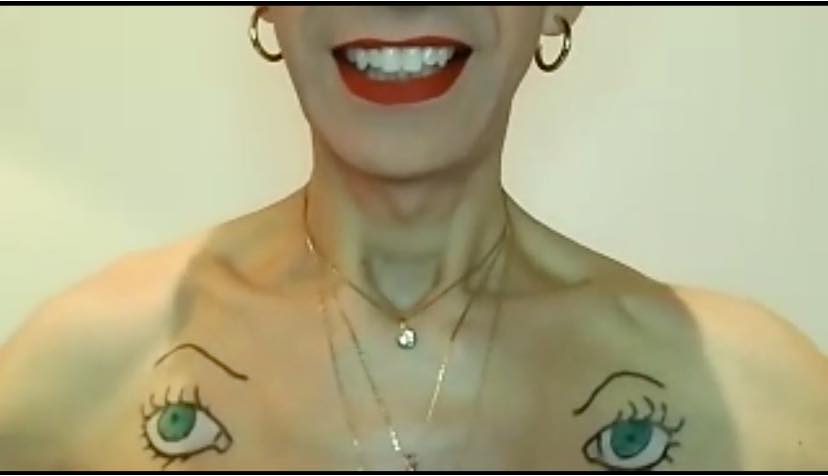
Nando Messias’s Aurora, a new show commissioned by CLAY (Centre for Live Art Yorkshire), is performed live on Zoom and really uses the medium for what it is. Aurora is a gorgeous reflection on image, on beauty, on ageing and mortality – and specifically, on the role that hair – a girl’s crowning glory – plays in all of these. A whole pageant of personae present themselves in this one sacrificial body, whose parts are offered up to us piecemeal as gifts for us to consume in voracious close-up: eyes, lips, hands, nipples. There’s Oxun – the Afro-Brazilian orixa of the rivers; golden goddess of beauty, of vanity, and of youthful femininity – who is often depicted (as here) adorned in rings and bracelets, carrying a hand-mirror and a hairbrush. Enter an Indigenous American spirit who tells us ‘the longer the hair, the stronger the soul’. Now Medusa, who’s a perfectly lovely and reasonable woman until she is ‘seduced’ (let’s call it what it is – raped) by Poseidon, her rage turning her into the monstrous snake-haired harridan we know from Greek mythology. ‘I am Antigone,’ says Nando. ‘I am Penelope.’ ‘I am Delilah.’ And Samson too – animus and anima unite. We learn that when Mary Queen of Scots was executed, her wig came off in the executioner’s hand. Nando/Aurora is losing their hair. S/he shakes loose the top-knot, curls tumbling, brushes her hair and shows us the hair that has come out on the brush: a symbol of the loss of youth, the loss of hope, ‘now closer to death than to birth’. But Nando is not yet defeated: ‘I can decolonise my body’ he says. Aurora is not done for yet: ‘I will rise again’ she says. So simple, so beautiful – a body framed, a poetic text, a carefully constructed piece of work. That’s the way to do it!
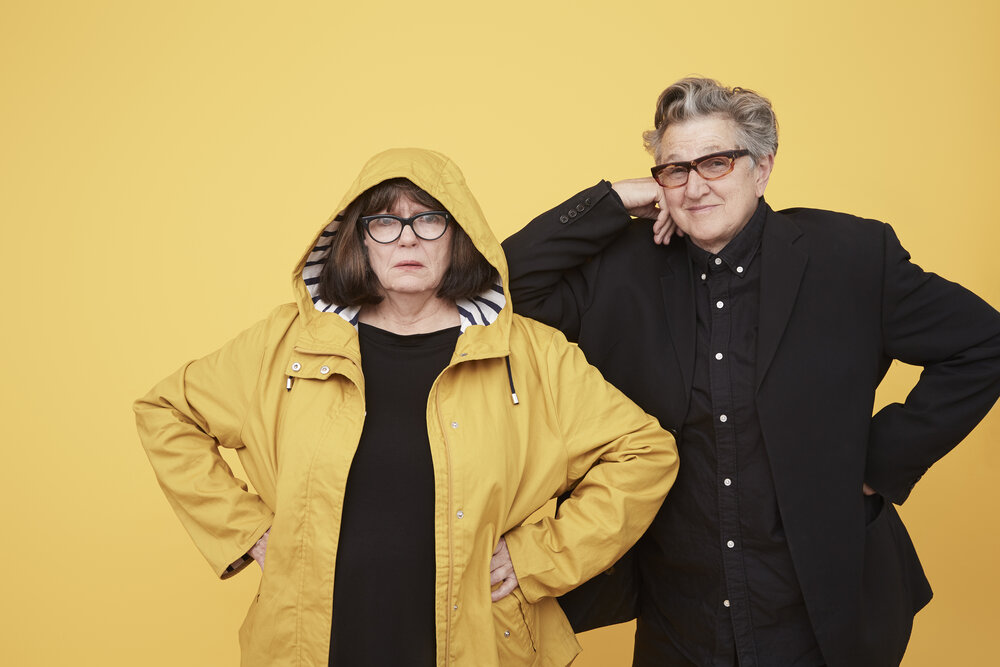
Also created for Zoom is Split Britches’ The Last Gasp. Commissioned by New York’s La MaMa Experimental Theatre Club, it was originally planned as a stage show, but ended up being a very different piece, devised via Zoom by the team of five – performer Peggy Shaw, performer/director Lois Weaver, lighting and video artist Nao Nagai, choreographer Morgan Thorson, and sound designer Vivian Stoll. It was created in the first four months of the 2020 lockdown, the two performers in residence in an empty house in Allerton, West Yorkshire: a house that ‘told us what to do’ as Peggy says in the post-show talkback. The scenography is provided by the house, the bodies within it, the few objects deployed (trestle table, cloth, bucket), and the carefully choreographed use of the house’s features – stairs, hallways, walls, doors – the performers’ bodies bathed in natural light, framed by doorways or windows. Then there’s the garden – wild in the best possible way, a riot of overgrown hydrangea bushes and buzzing bees. Much of the text from the show as first planned remains in the new version – particularly Peggy Shaw’s wonderful monologues – and most of the movement work had been sketched out in the studio pre-lockdown, but the piece is allowed to breathe and grow as a site-responsive work in the empty house. At the heart of the piece is the relationship between Split Britches’ co-founders, Lois and Peggy: partners in work and life for 40 plus years. Lois the hard-working academic, holding down a proper job. Peggy who gets awards and fellowships just given to her, easy peasy, on a plate. Lois who muses on the story of Echo and Narcissus, tells us how to set up a picnic in an apocalypse, and dances to Derrida. Peggy who muses that ‘Black male musicians were my butch role models’, reflects on the ‘Prince of Wails’ Johnny Ray (and the man who wrote his most famous song, Johnny Bragg – there’s a lot of Johnnies in Peggy’s life story), and reminds us that Johnny B Goode is up there whizzing round in space for all eternity on the Voyager spacecraft. ‘I never really know where you are going with your stories,’ says Lois, close to the end, ‘ but when you get there, I go – oh yeah…’
The collaborators worked together remotely with only the two performers actually present together in the house. The camera work is basic – this is not a film, and I feel it’s important to distinguish between work made by filmmakers and this new strand of Zoom-based performance-to-camera work – but everything works very well. The sound design is particularly good – snatches of Carly Simon’s ‘You’re So Vain’ and Bill Withers’ ‘Ain’t no Sunshine’ deconstructed and weaved in with the spoken text and the outdoor sounds of children playing or birds singing. I know, I know, I know, I know… But what if we didn’t know? Also in the rich mix: references to Charlotte Perkins Gilman’s madness-in-isolation novella The Yellow Wallpaper, Dorothea Tanning’s surrealist paintings, and Fred and Ginger’s ‘Let’s Call the Whole Thing Off’. Oh, and there’s a gorgeous cover of Ewan McColl’s ‘The First Time Ever I Saw Your Face’, perhaps the greatest love song ever written. It was first sung by Peggy Seeger – but here delivered by Peggy Shaw, accompanying herself on ukulele. A fitting finale to what is, ultimately, a show about longterm relationships, survival, and the power of love.
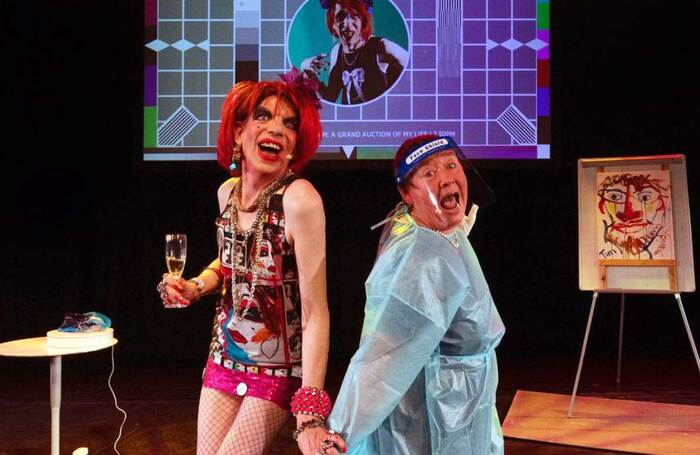
Late autumn brings along a little glut of ‘Zoomies’ that play with the TV game show format. David Hoyle’s A Grand Auction of My Life – an interactive auction in which we can bid for David’s prized possessions, which included a tawdry calendar, a jar of house dust, and a lipstick-stained mug – is on for one night only, streamed live. Be there or be square. David and his lovely assistant Debs Gatenby (he in mini-skirt, stilettos and fishnets; she decked up to the hilt in full PPE) are live in the HOME theatre in Manchester – alone but for a friendly producer/technician. Nothing sadder than a game show with no audience – the lack of laughter and applause echoes around the empty building – but never fear, we’re here, ready and willing for online interaction. In between auctions – which include a live ‘spirit painting’ for the highest bidder – we get ad breaks, which include a fabulous parody of the Cadbury’s Flake classic: ‘Only the crumbliest, flakiest chocolate…’ Hoyle is his usual wonderfully acerbic self throughout, lambasting the UK government for its multiple failings. What do we want? Revolution! When do we want it? Now! ‘There must be no return to normal,’ he chides. The monologues feel a little low-key without the audience to bounce off – Hoyle sparks so brilliantly off of a real live audience – but it works well enough. I like the fact that you can’t see it on catch-up: you were either there or you weren’t – just like real theatre!
Also playing with the game-show format, and also interactive, is Yael Karavan and Silvia Mercuriali’s Human Rights Bingo (presented as part of the Voila! Europe 2020 festival at the Cockpit Theatre). Here is a truly international show, with each performer in a different country (UK/Portugal), and the Juicy Ball Spinner somewhere else again; with audience members (alone or in family bubbles) wherever they happen to be. We are here to find out how much we know about the Universal Declaration of Human Rights. We each have a bingo card – issued to us on our phones by one or other of the performers, who greet us in a Zoom ante-room, before letting us through the curtains into the main space – and once everyone is in, the game begins with a little boogie, bouncing balls, and the teller calling the first number. ‘You are all equal until one of you wins,’ says Silvia with a gleam in her eye. ‘Just follow the rules,’ says Yael with a wicked grin. If there’s a match to our bingo card, we are invited onscreen to try and guess which human right is being referenced. There are verbal and visual clues: one of the cleverest is a little video of an orange being peeled to the sound of screams. Yep, come in number 5 – the right to freedom from torture. It’s all weaved together cleverly, and delivered with great gusto by our two energetic performers, who hold the space admirably – with disco-dancing and clever quipping a-plenty. Jolly good fun, and educational to boot!
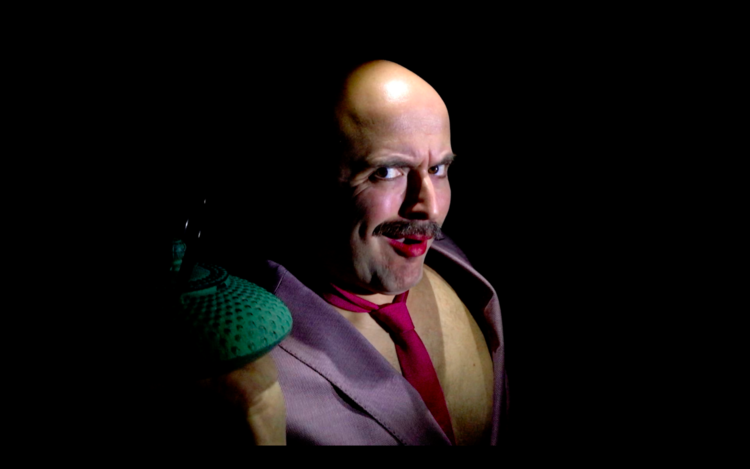
In another strand of work, I see a number of short films made during lockdown. Ad Infinitum created a trio of performance-to-camera works under the tag A Small Gathering, presented by the company in their own online festival, Where You Are. Three performers – company co-director Nir Paldi and regular collaborators Deb Pugh and Charlotte Dubery, ably aided and abetted by sound designer Sam Halmarack and director George Mann – each present their own word-free take on isolation. Nir’s alter-ego is a nightmarishly lurid gent, Mr Pink, replete with popping eyes and a whole succession of fears and obsessions, including lascivious hand-washing with a very slippery bar of soap – Paldi using his admirable mime skills to bring this darkly funny persona to life. In Rewilding, Deb Pugh finds herself in a parody of normal life as kettles boil and cupboard doors open and shut, the scenario becoming more bizarre as toilet rolls mount up and windows are taped over – eventually leading to an escape bid and a demented dance in the landscape. Cynthia’s Party, by Charlotte Duberry, is a terrifyingly spooky piece, a ritualistic dolls’ tea party in which the clunkily animated china dolls turn on their mistress – echoes here both of Jan Švankmajer and Barbarella. All good stuff!
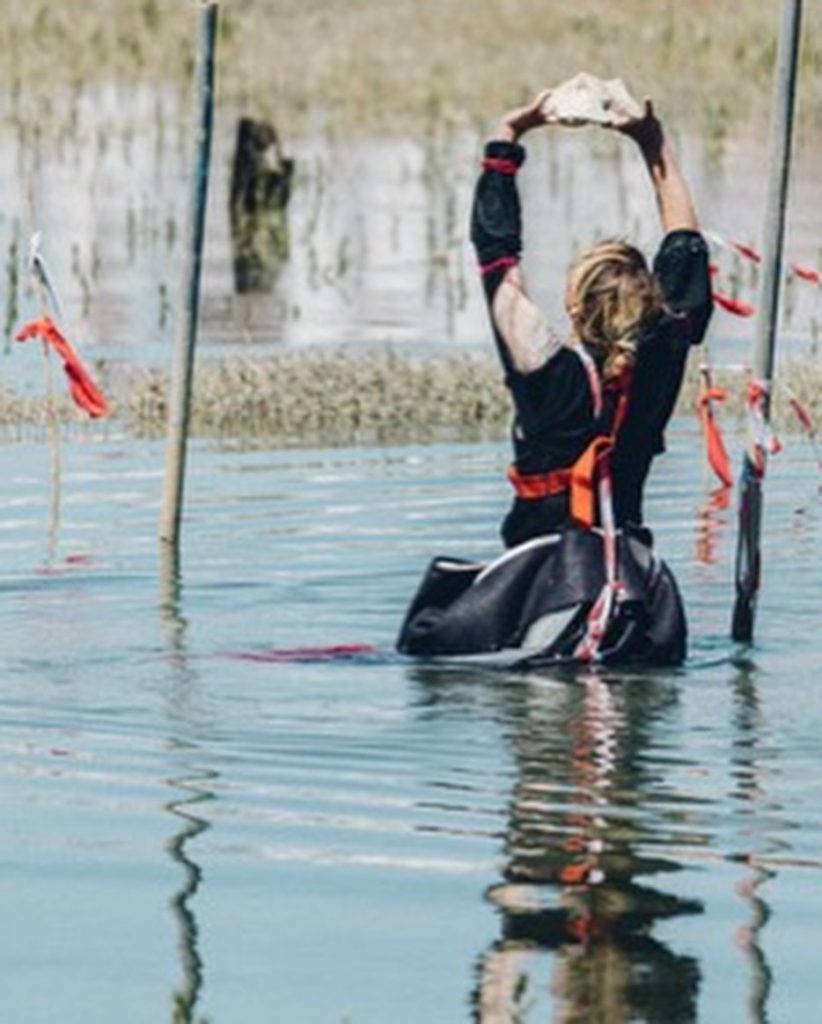
Emma Frankland’s River Adur Duet is a beautifully shot outdoor film, commissioned by Farnham Maltings and created with filmmaker Rosie Powell – a performance-to-camera piece that is also an homage to the gorgeous West Sussex landscape surrounding Emma’s home (she lives on a houseboat in Shoreham-by-Sea) – a liminal, in-between kind of place: ‘An estuary. Not land, not sea. Not salt water, not fresh water.’ A large piece of chalk stone is taken from nearby Pyecombe Quarry, ritualistically carried to the water by shaman-woman Emma, who is dressed in layers of trailing skirts weighed down by the water she wades through. The carved rock is immersed in the water, and scrubbed – a celebration of impermanence, of continual change and renewal, chalk dissolving into water to make something new. What has come in for you on this tide, she asks. What do you hope to release? The cinematography is great – long shots of the walk from muddy banks into the flow of the river, then the camera focusing in on Emma’s hands scrubbing the stone in the water, then panning out to take in the interested onlookers peering over the bridge taking photos, or the passers-by walking along the towpath giving a quick glance over to see what’s happening. Really lovely work from the whole team.
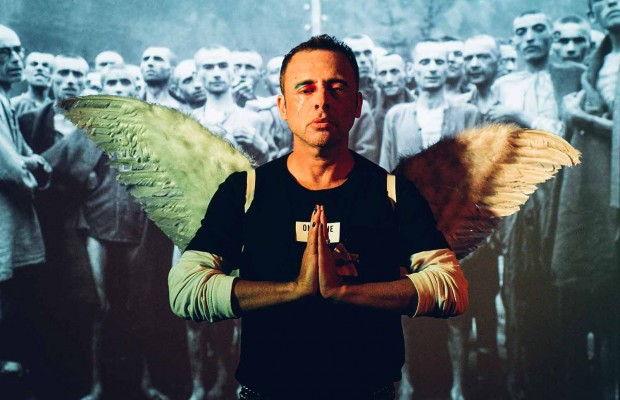
Jeremy Goldstein’s Truth To Power Café is another excellent film – a reworking of ta pre-existing live show that is far more than documentation, being a valid piece of art that stands up on its own merits. It is written and performed by Jeremy and poet Henry Woolf – the latter one of the Hackney Gang of writers and artists that included Jeremy’s father Mick Goldstein and the Nobel Prize laureate Harold Pinter. And there’s a proper filmmaker on board – hurrah! Jen Heyes has a great eye for a good shot. Close to the start, in a smart demob suit, the Film Noir lighting carving out the contours of his face, the camera closes in as Jeremy looks around an empty Conway Hall. It then pans out to lovingly explore the dark corners of this magnificent space – a venue in London’s Red Lion Square holding a longstanding relationship with left-wing politics and free thinking. Carved above the stage: To Thine Own Self Be True. ‘Don’t let go of what you know,’ says Jeremy, ‘Yesterday’s tomorrow is today.’ The dead may be invisible, but they are not absent…
The piece is a carefully crafted and loving triple-aspected memoir: first of the Hackney Gang, with their left-wing politics, their precocious love of Bunuel and Beckett, and their group antics in post-war London with ‘poems in their pockets and the world up their arse’; then, of Jeremy’s father Mick, including their falling out and the heartbreaking story of the letter sent ‘to patch things up’ which arrived the day Mick died, and was thus never read; and finally, the story of Jeremy’s own personal journey as an activist and artist. We see him in a multitude of guises throughout the film: a winged angel, a red anorak clad activist, an Ian Dury style punk proclaimer, and of course that besuited post-war wide-boy, his father’s son. We also get to meet Henry Woolf, a cheery old East End geezer with a wicked grin, who delivers his own poetry with panache. Watch out, he warns, I’m the genie in the bottle. The film is cleverly edited, with vintage TV/video cut-ups giving us a montage of the Battle of Cable Street, Black Lives Matter protests, ACT UP! demos, and refugee boats coming to shore – thus uniting past and present political concerns and the ongoing history of turmoil and resistance. Another section gives us a block of invited guests speaking to camera, offering their responses to the question: Who has power over you, and what do you want to say to them? A final message, writ large: BLOW OUR TRUMPETS, ANGELS. And so they should… collaborative art-making at its best.
As the year nears its end, we get ever more inventive responses to the need to create work to be received by remote audiences, artists re-interpreting the notion of a shared space. Silvia Mercuriali is the queen of ‘auto-teatro’ having in the past created numerous actor-less theatrical experiences in non theatre spaces, including cafés and supermarkets. Now, she offers us Swimming Home an ‘immersive show in your bathroom’ for which participants are sent a pack that includes swimming goggles and a code to access the instructions and soundtrack. Augusto Corriere – or rather his alter ego, the ‘magician not wizard’ Vincent Gambini – delivered The sky from this window as part of the Edinburgh Magic Festival, a 15-minute piece that happens over the phone, and includes ruminations on the nature of reality, the connectedness of all things, and the unlikeliness of finding a double-headed coin in the street. It also, fulfilling its obligation to be a magic show and not just a show about the magic of everyday life, includes a mighty fine trick in which Gambini correctly guesses the number you have revealed from calculations that involve your birth date and secret pin number…
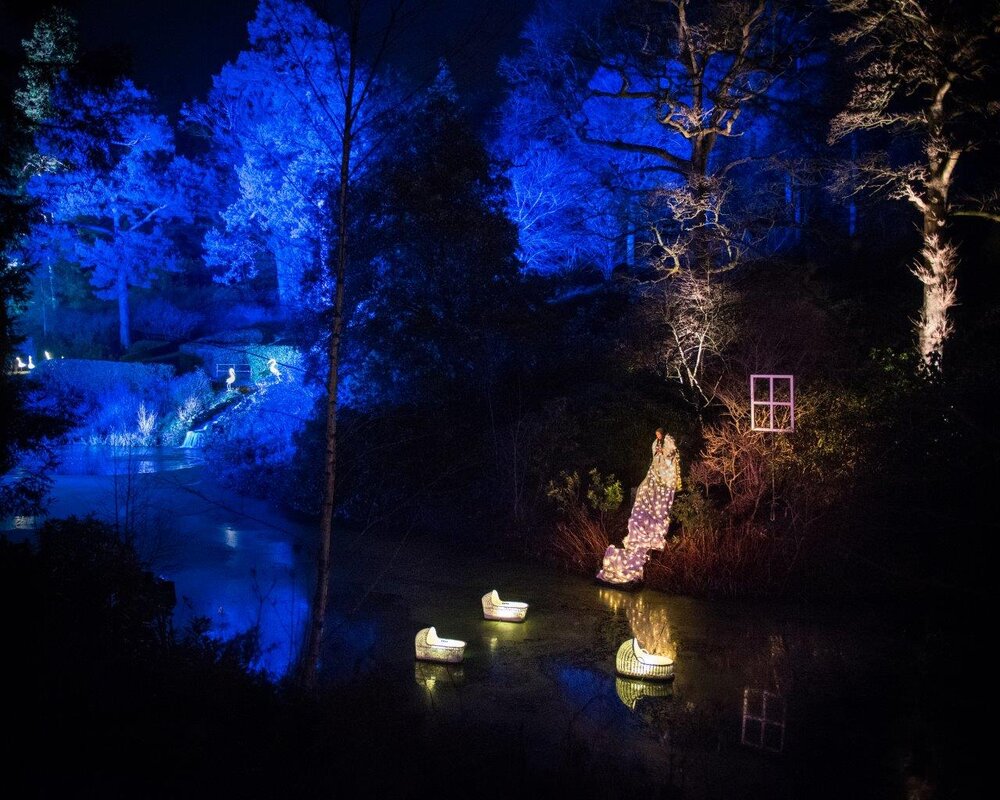
Meanwhile, what of actual live performance? Is anything happening out there? Not a lot. Even shows commissioned for Christmas runs, created with Covid-19 safeguards firmly in place, have the rug pulled out from underneath when the revised tier restrictions kick in. Indoor theatre is once again completely grounded.
But there is one beacon of light and hope – outdoor arts. Across the country, a number of magical illuminated gardens open up to visitors. As long as you arrive in household bubbles, stay socially distanced on the paths, and keep moving – you’re OK. Take Leonardslee Illuminated, for example. Set in a beautifully landscaped park in mid-Sussex, replete with hilly walkways and a grand lake, here be dragons and a whole lot more – including owls, wolves, and bears. Declaration of vested interest: the musician husband, James Foz Foster, has composed the soundscapes and is performing live, fingers freezing nightly as he tackles musical saw, bells and chimes. Elsewhere on site, Bear North give us weird and wonky interpretation of folk art music, dance and European midwinter rituals around the fire-pit, dressed enticingly in bear and rabbit costumes; John Knowles gives us a virtual (or is it actual?) encounter with the legendary Jack, Green Man of the Woods; and Murmuration Arts present their new show Nightlight Lullabies – The Mother’s Voice which features verbatim recordings of mothers’ songs and related experiences with their young babies, emanating from beautifully crafted ‘cradles’ hanging from trees; and from across the lake, on which gently float a half dozen or so moses baskets, the archetypal Mother herself, replete in a flowing star-spangled nightgown, soothing the audience with softly sung lullabies.
Oh what a joy to experience live performance – to be outdoors on a cold and frosty evening, with a flask of mulled juice (with a dash of rum, natch), promenading through a beautiful space, serenaded by bears and dragon-masters and magical mothers…
Let’s hope there will be more – much, much more – in 2021.
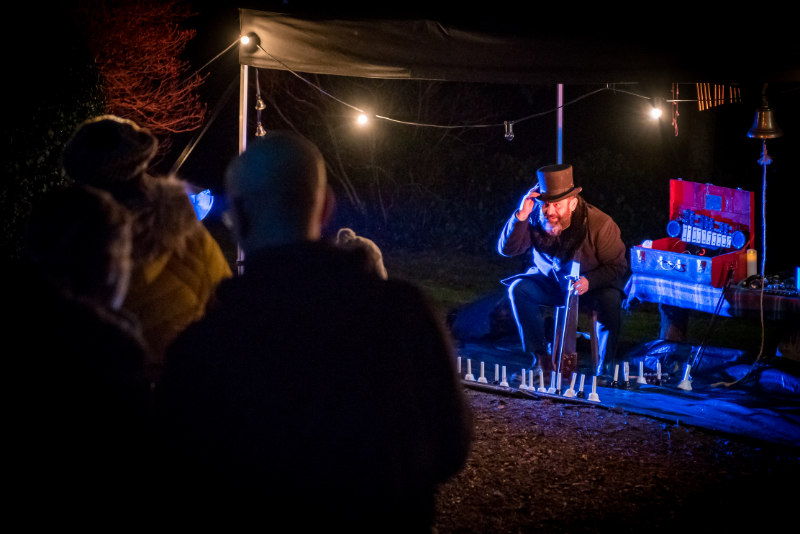
Images credits, top to bottom:
Featured image (top) Leonardslee Illuminated (live outdoor arts). Photo Ray Gibson; Nando Messias: Aurora (live on Zoom); Split Britches: The Last Gasp (Zoom). Photo Christa Holka; David Hoyle: The Grand Auction of My Life (live on Zoom). Photo Lee Baxter; Ad Infinitum: A Small Gathering. Nir Paldi as Mr Pink (short film); London Artists Projects / Jeremy Goldstein: Truth To Power Café (written by Jeremy Goldstein and Henry Woolf, directed by Jen Heyes). Photo Kate Holmes; Murmuration Arts: Nightlight Lullabies – The Mother’s Voice at Leonardslee Illuminated (live outdoor arts). Photo Ray Gibson; James Foz Foster at Leonardslee Illuminated. Photo Ray Gibson.

